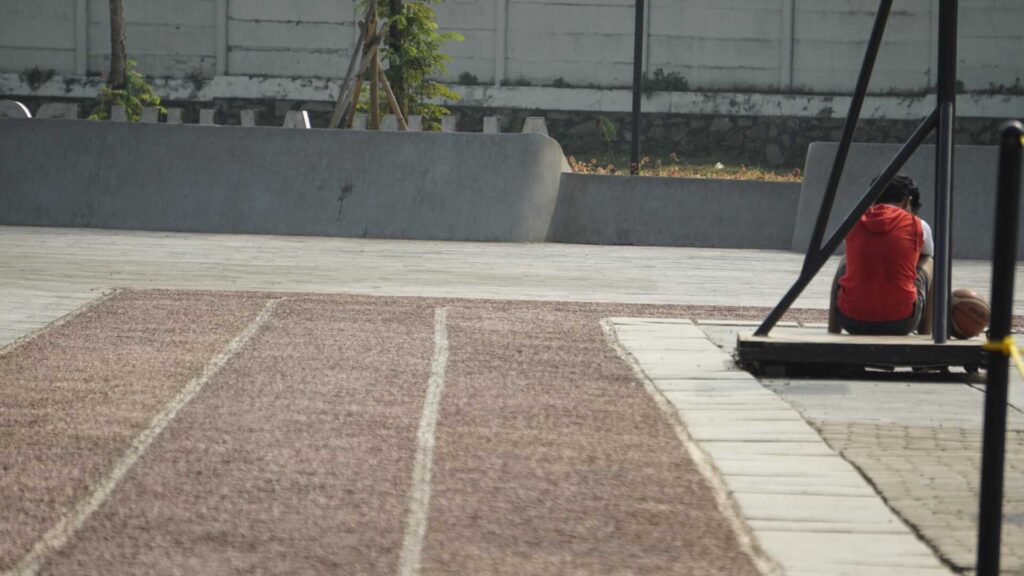You may think TPO membrane installation is a breeze, but mastering these 7 best tips can make a world of difference in the durability and longevity of your project. From ensuring the surface is impeccably prepped to selecting the right adhesive and employing precise seaming techniques, each step plays an essential role in the success of your installation. Stay tuned to discover how these expert tips can elevate your TPO membrane projects to the next level.
Key Takeaways
- Use manufacturer-recommended adhesive for a strong bond.
- Implement precise seaming techniques for durability.
- Schedule installation in moderate temperatures for optimal results.
- Regularly inspect and maintain seam integrity.
- Follow safety measures and wear appropriate gear during installation.
Proper Surface Preparation
Before commencing the installation of TPO membrane, it’s essential to make certain that the surface is properly primed to ensure a successful application. Start by performing a comprehensive surface inspection. Remove any debris, dirt, or loose particles that could impact the adhesion of the membrane. Confirm the surface is clean, dry, and devoid of any contaminants that could jeopardize the installation process.
Next, consider material compatibility. Verify that the surface is suitable for TPO membranes. Check for any existing coatings or materials that could impede proper adhesion. If needed, use primers or cleaners recommended by the manufacturer to adequately prepare the surface. Remember, appropriate material compatibility is vital for the long-term performance of the TPO membrane.
While examining the surface, take note of any irregularities or damage that may require attention before installation. Smooth out any rough areas and mend any cracks or holes to establish a uniform surface for the membrane. Investing time in preparing the surface meticulously will lead to a more resilient and dependable TPO membrane installation.
Ensure Correct Adhesive Application
To guarantee a successful TPO membrane installation, proper adhesive selection is vital. Different types of TPO membranes may require specific adhesives, so consulting the manufacturer’s guidelines is necessary.
Additionally, mastering adhesive application techniques such as correct coverage, open time, and temperature considerations will contribute to a durable and long-lasting TPO roof system.
Proper Adhesive Selection
Selecting the appropriate adhesive is crucial for the successful installation of TPO membrane roofing systems. Adhesive compatibility is vital to guarantee a strong bond between the membrane and the substrate. When choosing an adhesive, consider the specific requirements of the TPO membrane manufacturer to maximize performance.
To achieve installation efficiency, it’s vital to select an adhesive that’s recommended by the membrane manufacturer. Using an incompatible adhesive can lead to adhesion failure, compromising the integrity of the roofing system. Additionally, the adhesive should be suitable for the installation method being employed, whether it’s fully adhered, mechanically attached, or ballasted.
Before starting the installation process, carefully review the manufacturer’s guidelines and specifications for adhesive selection. This will help you avoid costly mistakes and maximize a durable and long-lasting TPO membrane roof. Remember, the right adhesive is the foundation for a successful roofing installation.
Adhesive Application Techniques
When applying adhesive for TPO membrane installation, employing correct application techniques is crucial to guarantee a secure and long-lasting bond between the membrane and the substrate. To achieve optimal outcomes, follow these key adhesive application techniques:
Adhesive Coverage: Ensure consistent coverage of adhesive on both the membrane and the substrate surface to prevent any air gaps that could compromise the bond strength.
Maintain Proper Drying Time: Allow the adhesive to dry to the manufacturer’s recommended tackiness level before placing the TPO membrane to ensure a strong and durable bond.
Use the Right Tools: Utilize tools such as notched trowels or rollers to evenly spread the adhesive and avoid puddling or uneven application.
Check for Compatibility: Confirm that the adhesive is compatible with both the TPO membrane and the substrate material to prevent any adhesive failures or chemical reactions that could weaken the bond.
Implement Precision Seaming Techniques
When it comes to TPO membrane installation, precision seaming techniques are vital for ensuring the longevity and integrity of the roofing system. Seam strength is of utmost importance, and proper heat welding techniques must be employed to achieve a durable and watertight seal. Following strict seam inspection guidelines is essential to catch any potential issues early on and maintain the overall quality of the installation.
Seam Strength Importance
Why is seam strength important in TPO membrane installation? Ensuring strong seams is vital as they’re the foundation of a watertight roofing system. Proper seam strength provides longevity and performance, safeguarding the building from water infiltration and potential damage. Here are four key aspects to take into account when focusing on seam strength:
Seam Examination: Thoroughly inspect seams before, during, and after installation to identify any defects or inconsistencies that could weaken the strength of the membrane.
Heat Fusion Techniques: Mastering precise heat fusion techniques is essential to achieving strong and durable seams. Proper temperature regulation and welding speed are crucial for seam integrity.
Seam Strengthening: Use seam strengthening methods like seam tape or additional heat-fused layers to bolster the strength of critical areas such as corners and edges.
Quality Assurance: Implement stringent quality assurance measures to verify that all seams meet industry standards and manufacturer specifications, ensuring a dependable and resilient TPO roofing system.
Proper Heat Welding
To guarantee a successful TPO membrane installation, mastering proper heat welding techniques is essential. Achieving the correct welding temperature is vital for seamless seams. The ideal temperature typically ranges between 500 to 600 degrees Fahrenheit, ensuring optimal fusion without damaging the membrane.
Use a hot air gun or a robotic welder for consistent and controlled heat application. Prioritize the quality of your welding equipment to guarantee precise and durable seams. High-quality welding machines and tools contribute significantly to the success of the installation process.
Seam Inspection Guidelines
Inspecting seams is a critical step in securing the integrity and longevity of a TPO membrane installation. To confirm seam integrity, follow these visual inspection guidelines meticulously:
Visual Examination: Conduct a thorough visual assessment of the seams to check for any irregularities such as gaps, bumps, or inconsistencies in the welding.
Tug Test: Perform a gentle tug test on the seams to verify they’re securely bonded and can withstand normal stress without delaminating.
Seam Width: Ascertain that the seams have consistent width throughout the installation, as variations can lead to weak points in the membrane.
Seam Overlap: Validate that the seams have been overlapped correctly as per manufacturer recommendations to prevent water infiltration and enhance the overall waterproofing performance.
Optimal TPO Membrane Handling
For efficient installation of TPO membranes, mastering the art of ideal TPO membrane handling is necessary. Proper material storage is essential to maintain the integrity of TPO membranes. Store the rolls in a favorable, dry place away from direct sunlight and extreme temperatures. Avoid storing them in areas with high moisture levels to prevent any damage before installation.
Prioritize equipment maintenance by ensuring all tools are clean and in good working condition before handling TPO membranes. Regularly inspect and clean application equipment such as rollers and hot air welders to guarantee best performance during installation.
When handling TPO membranes, make sure to avoid dragging or dropping the rolls to prevent tears or punctures. Handle the rolls with care and use appropriate lifting techniques to prevent any damage to the material.
When transporting the rolls to the installation site, secure them properly to prevent shifting or damage during transit. Additionally, always handle TPO membranes with clean hands to avoid transferring dirt or debris onto the material, which could affect the welding process.
Prioritize Weather Conditions
Prioritizing weather conditions is vital when installing TPO membranes to guarantee peak performance and longevity of the roofing system. Consider the following key factors to achieve a successful installation:
Temperature considerations: Extreme temperatures can impact the TPO membrane’s flexibility during installation. It’s best to install TPO membranes when temperatures are moderate, typically between 50°F to 60°F, as this range allows for easier handling and welding of the membrane.
Wind impact: Strong winds can make the installation process challenging by causing the membrane to lift or misalign. It’s important to schedule the installation on days with minimal wind speeds to maintain control over the membrane and prevent any potential damage.
Rain precautions: Moisture from rain can hinder the adhesion of the TPO membrane and compromise the overall integrity of the roofing system. Avoid installing TPO membranes during rainy days or put in place proper safeguards to keep the work area dry.
Humidity effects: High humidity levels can impact the curing process of adhesives and sealants used in TPO membrane installation. Monitor humidity levels and aim to install the membrane when humidity is within the recommended range to achieve optimal bonding and performance.
Conduct Thorough Quality Checks
To ensure the TPO membrane installation meets quality standards, thorough quality checks must be conducted at various stages of the process. Quality assurance is important to guarantee the longevity and effectiveness of the TPO membrane. Throughout the installation process, there are key checkpoints that shouldn’t be overlooked to maintain the highest standards of quality.
Firstly, during the preparation phase, inspect the substrate thoroughly to identify any irregularities that could affect the installation. Addressing these issues beforehand will prevent future complications.
Next, verify that the membrane rolls are intact and undamaged before installation begins. Any defects in the membrane could compromise its performance and lead to premature failure.
Once the installation process starts, periodically assess the seams and welding to ensure they’re executed correctly. Proper seam connections are vital for the membrane’s durability and waterproofing capabilities.
Additionally, conduct adhesion tests to confirm that the membrane is securely bonded to the substrate.
After the installation is complete, perform a detailed quality check to review the overall workmanship and make sure all details have been attended to meticulously. By implementing these quality checks throughout the installation process, you can maintain the highest standards of TPO membrane installation and achieve a long-lasting, reliable roofing system.
Regular Maintenance Practices
How can you guarantee that your TPO membrane roofing system continues to perform at its best over time? Regular maintenance practices are key to ensuring the longevity and effectiveness of your TPO membrane. Here are four essential maintenance tips to keep your TPO roofing system in peak condition:
Seam Maintenance: Inspect the seams of your TPO membrane regularly to check for any signs of damage or separation. Address any issues promptly to prevent water infiltration and maintain the integrity of the roofing system.
Scheduled Inspections: Set up a routine inspection schedule to assess the overall condition of your TPO membrane. Look for punctures, tears, or other forms of damage that could compromise the performance of the roofing system.
Cleaning and Debris Removal: Keep your TPO membrane clean by regularly removing debris such as leaves, branches, and dirt. Accumulated debris can trap moisture and lead to issues like mold growth and membrane degradation.
Professional Maintenance: Consider hiring a professional roofing contractor for regular maintenance checks and repairs. Professional maintenance can help identify potential problems early on and extend the lifespan of your TPO membrane roofing system.
To Sum Up
Now that you have mastered the art of TPO membrane installation, remember that attention to detail is key. By balancing precision with efficiency, you can guarantee a seamless and long-lasting result. Stay vigilant in your maintenance efforts to protect your investment. The success of your installation lies in the meticulous execution of each step, so take pride in your work and enjoy the durability of your TPO membrane.

